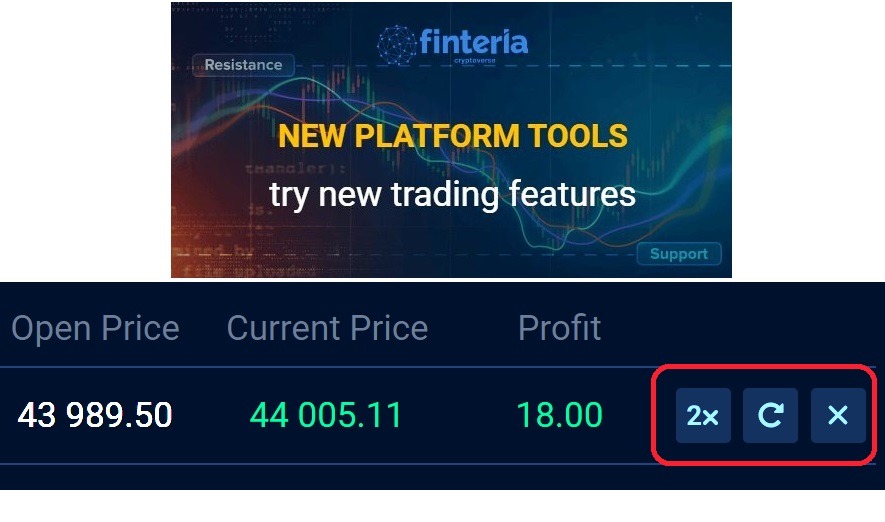
MACD indicator and entry strategy

The MACD indicator is one of the most used by traders. An entry strategy for binary options is also described in this article.
You may be interested in learning more about the MACD indicator, and how to get an entry signal from it (MACD strategy).
What is MACD
MACD stands for ” Moving – Average – Convergence – D ivergence”. Let’s try to understand better.
Technical analysis indicators give information that is not easily obtained by simply observing the charts, and the MACD is no exception. The MACD indicator is nothing more than an indicator built on the functioning of various moving averages

The MACD indicator consists of two lines, the “MACD line” (in the blue figure) and the “signal line” (in the brown figure). There is also a bar graph.
Let’s start talking about the blue line, the MACD line ( MACD line, in English).
The MACD Line
The MACD line (blue line shown) fluctuates above and below the zero level line.
The MACD line represents the difference between two moving averages EMA with different periods.
In the figure, the two EMAs are those depicted at the top in the candlestick area, and highlighted here only for reasons of greater understanding, but which will not then be shown during the operation of the indicator, as they are replaced by the single blue line of the indicator which represents them the difference.
When the difference between these two moving averages is zero, i.e. they touch, the MACD line that represents them is on the zero line (white in the figure).
The greater the difference between the two moving averages (top), the further the EMA line moves away from the zero line.
We know from technical analysis that when two moving averages cross, they can generate an entry signal. So the blue EMA line below touching the white line is an alert to be aware of.
The Signal Line
The signal line , also known as the central line or “central line” in the figure depicted in brown, is a 9-period EMA. It acts as a slow moving average, which is crossed by the fast MACD at multiple points.

The Bar Chart
The Bar Graph represents the distance between the fast MACD line and the slow signal line. So when the two lines touch the length of the bar resets to zero.
The bars will be shown in green (positive polarity) when the prices on the chart are rising (uptrend).
The bars will be shown in red (negative polarity) when the prices on the chart are falling (downtrend).
If the price goes up, the bars will be above the zero line, if it goes down, the bar graph will be below it.
Setting MACD parameters
It is possible to change the default values of the parameters of the two mobile lines of the MACD. These values measure the number of candles on which the line bases its calculations.

When the MACD line crosses the signal line and moves higher, this indicates the possibility of a price increase.
When the MACD line crosses the signal line and moves lower, this indicates the possibility of price reduction.
How the MACD indicator works
MACD is available as standard on most modern platforms and all calculations are fully automated. The trader just has to activate it. It is therefore not necessary for the trader to carry out annoying calculations to activate its functioning.
.If you use Metatrader there is an understandable and comprehensive MT4 Guide for the binary trader .
MACD trading strategy
It is possible to obtain a basic strategy with the MACD which allows us to obtain trading signals.
As we mentioned before, we get a signal at the crossing of the lines and precisely:
When the MACD line crosses the signal line upwards we get a CALL entry signal
When the MACD line crosses the signal line downwards we get a PUT entry signal
It is important to wait for a confirmation of the signal, waiting for the closing of the current candle and entering the trade at the opening of the next candle.
The zero line acts as resistance/support and once it is crossed one can expect a subsequent contact of the lines of the indicator, thus preparing us for the trade.
This strategy should also take into account the ” hidden divergence ” as described in the next paragraph.
For the deadlines of the trades, please refer to the specific article, “The Best Deadline”:
MACD divergence
Not only for the MACD, but valid for most oscillator-indicators, divergence analysis, often called “hidden divergence” is very useful for getting entry signal confirmation, and knowledgeable traders use it regularly.
Since the subject of divergences requires space and a specific approach, we refer you to the article where you will find the information you need to improve your entries, with the help of the divergences





